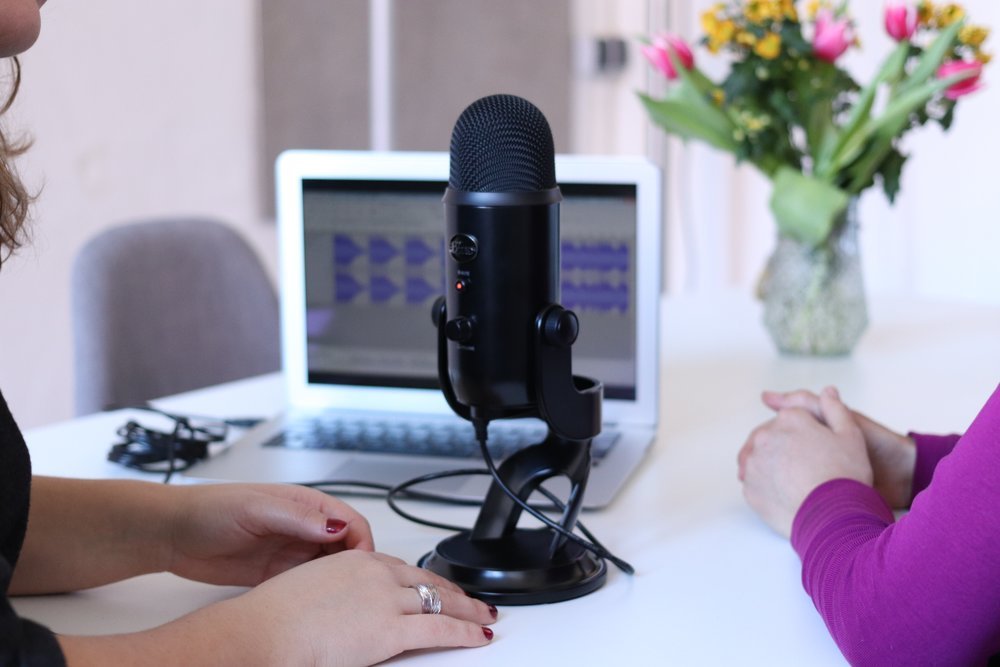Captivate & Engage Your Audience with Transparency
Giving a presentation is like pulling up to a stranger in your car and yelling, “Hey, let’s go for a drive!“ You’re hoping that the stranger will humor you and at least get in the car, giving you a chance to prove that you’re a trustworthy driver and that it’s going to be a great ride.
As a public speaker, you are the driver, and you’ve only got about thirty seconds to persuade this stranger, a.k.a. your audience, that the journey you are proposing will be worth their attention. What can you do that screams to your audience “good times ahead!” in such a short amount of time? You can be transparent.
Who doesn’t want to hear about someone’s most embarrassing moment, or the story of how they met their spouse? Effective transparency is more than just spilling your guts, however.
In this article, I’ll be demonstrating how you can strategically utilize this technique to not only capture your audience’s attention, but to also make them more receptive to the ideas you’re trying to convey.
What’s more, I’ve decided to put my money where my mouth is - all of the stories I tell about myself here are true.
What exactly is transparency?
Let’s start with a brief explanation of what it means to be transparent. It’s simply being honest about what you and your life actually look like, and resisting the urge to portray yourself as bigger, better, and/or flawless. Although your audience already knows you’re not perfect, your willingness to admit and even talk about these imperfections has a powerful trust-building effect. What’s more, it’s irresistible, and will draw your audience in without them even realizing it.
It works for every topic.
At this point, if you’re thinking that this article doesn’t apply to you and your field, don’t be fooled. Whether you’re talking about something as technical as the best way to present numeric data or a more creative process such as brainstorming, every presentation can benefit from a judicious dose of transparency. And I provide an example later in this article, just for you skeptics.
Storytelling and Transparency Pack a One-Two Punch
The easiest way to be transparent is to tell stories in which you reveal a struggle you experience, talk about an emotional or life-changing event, or describe a downright failure. This is the stuff of real life, and your audience will be riveted.
Obviously, we all have these kinds of stories. The challenge is to find one that you feel comfortable sharing and that is also related closely enough to your point that it can serve as an introduction or example.
Imagine that I’m doing a public speaking training that includes the topic of dealing with nervousness. I might begin with the story of how I was recently on my way to my own birthday celebration at a restaurant and arrived about 45 minutes late because I had been wandering around, unable to find it.
This, in spite of the fact that I was sure I was going in the right direction when I started (I wasn’t), I had Google Maps open the whole time, I was trying to follow the big fat dotted line, and I had called the restaurant two separate times to get directions. When I finally got there all the restaurant workers greeted me with “You made it!”
I would transition into my topic by pointing out that while arriving late to my birthday dinner was frustrating, arriving late to your own presentation is an entirely different animal, and guaranteed to ratchet up the anxiety significantly. I would then go on to explain that in my case, I generally have to give myself twice the amount of time I think I’ll need to get someplace new because I’m so directionally challenged.
Unfortunately, I forgot that rule on my birthday. As a public speaker, however, it’s not enough to arrive on time. To actually decrease your nervousness, you’ll want to arrive early so that you have plenty of time to make sure that everything is in order as well as to get yourself in the right frame of mind.
That little anecdote works well on several levels. It captures my audience’s attention because it’s a story, it leads into my topic, and it employs self-deprecating humor. Poking fun at yourself is a kind of transparency that is especially effective because it makes the audience laugh, which in turns helps them to relax and better understand and remember what you’re saying.
Create Trust Around Difficult Issues
Being transparent can also be helpful when you need to address difficult issues. As a speech coach specializing in the field of human trafficking, I’m dealing with sensitive topics all the time. One of these has to do with the way that victims of labor trafficking are producing products that ordinary citizens buy on a daily basis without a second thought.
If I were speaking on this issue, it would be easy for me to point the finger at my audience and say “So long as you continue to turn a blind eye and indiscriminately buy whatever you want, you’re perpetuating the problem.”
But in my experience, revealing my own struggles in this area would actually be a much more effective way of connecting with my audience and make it more likely that they’ll be open to my message. For example, I could tell this story.
I recently went shopping at the mall for a purse and a couple of tops. I remembered that H&M has expressed awareness about the problem of trafficking, so I started there. I tried on several items but had no luck whatsoever.
I moved on to a smaller store and tried on more clothes. Nothing worked, but I did finally find a purse. “Made in China,” the tag said. I sighed. . . China is notorious for trafficking. I put the purse back. I went to a third store and after looking around for a long time, I finally found several blouses that not only fit but looked great. What a relief.
I don’t particularly like shopping, and by this time I was tired, hungry and just wanted to go home. I didn’t even care that I hadn’t found a purse. But while I was waiting in line to pay, it dawned on me that I should check the tags. “Made in China.”
Every single one, made in China. I hesitated. I ran through the options in my mind, looked at my watch, listened to my stomach rumble . . . and then I bought them. I still feel frustrated by the whole situation.
With this story, I am accomplishing several things. One, I’ve demonstrated that I’m not speaking down to my audience from a position of superiority, but rather, I’m walking alongside them, experiencing the same challenges of being a conscious consumer that they are. If I were to propose some solutions to these challenges later in my presentation, I believe my audience would be more likely to consider them.
Two, I’ve taken an issue that might seem removed and remote and made it personal. I could go on to remind my audience (and myself) that someone’s fingers had sewn that tag on. And it’s possible that those fingers belong to a person who is not free. The more we can bring issues down to an individual level, the easier we make it for our audience to empathize and engage.
Now imagine for a moment that I’d ended this narrative immediately after I’d seen that the purse was made in China and I’d put it back. In that case, I would’ve been the hero of my own story. But bragging about that particular success would have done nothing toward getting my audience to trust me and go on that persuasive journey with me. I also want to point out that if I had edited the story in such a way as to make myself look better, I wasn’t being truly transparent.
Beware the Vulnerability Hangover
Hopefully by now it’s clear that personal stories can go a long way toward achieving the kind of transparency that draws in your audience and makes them more receptive to your message.
But I would be remiss if I didn’t warn you about transparency’s flip side, the “vulnerability hangover”. This condition occurs after you’ve exposed more of yourself than you intended, and you’re left wishing that you had a fishing rod with which you could reel those unfortunate words back in.
For example, perhaps while you were practicing your motivational speech in the privacy of your own home, telling that story about the time you were homeless felt like a good idea. It seemed a powerful way of demonstrating the point that adversity can force us to see life in a new way. But when you stood on stage and looked out at all the dressed for success executives, you weren’t so sure.
Afterwards, although your presentation as a whole seemed well received, you couldn’t get rid of that nagging feeling that people were looking at you differently and that you shouldn’t have divulged that information.
HOW NOT TO SHARE TOO MUCH
Fortunately, there are ways to avoid the dreaded hangover. I suggest the following:
• Determine in advance how much personal experience related to your topic you’re willing to share, and stick to this decision. In the previous example, the speaker might have felt more comfortable recounting that he had talked to a fair amount of homeless people, and that he’d learned some important lessons from these conversations, assuming that that were true.
This advance preparation will also be of tremendous help after a presentation, when you’ll often have the opportunity to field questions from the stage and/or interact with audience members individually.
These moments can be a time of intense pressure to reveal more details. But remember, how much of that personal experience you want to relate is entirely up to you, and a decision that is best made before you’re put on the spot.
• If you still aren’t sure about including a particular narrative, err on the side of caution. Remember, telling a story about yourself is only one way of making a point.
If you do decide to go ahead with a specific story, prepare an alternative way to support your point in case at the last moment you decide that you’d rather not be transparent in that way.
• Redirect or call out inappropriate questions. To do this, you need to prepare beforehand by anticipating questions that are invasive and/or insensitive, and practice how you could respond. In this situation you have two options.
One is a simple redirect, as in the following example. I was listening to a podcast in which a woman was discussing her novel, a story that includes the theme of trafficking. She was then asked point blank if she was a sex trafficking victim herself.
She replied by stating that there were some things she felt comfortable talking about, and others she didn’t, and then redirected the question by saying “but what I can say is. . . .” and she went on to focus on a different but related point. The redirect was smooth and the interview continued without a hitch.
Your second option is to directly address the inappropriateness of the question itself. If you like, you can frame it as a “teaching moment” in which you explain that questions which ask about deeply personal information that the speaker hasn’t already divulged put that speaker in a near impossible situation.
It’s like asking someone if they’re gay. Fortunately, more and more people are coming to the understanding that essentially outing someone in this way is wrong. But in other sensitive matters, for example, bankruptcy, abortion, incarceration, sex trafficking, etc., people still often forget to exercise the same good judgment.
By facing this kind of behavior head on, you’ll not only gain respect, but you’ll also leave your audience a little wiser in this regard.
What about technical topics?
Remember at the beginning of this article I promised that even if you have a “sterile” topic such as how to present numeric data, transparency can work for you, too? Here’s one example.
Let’s say you’ve been hired to provide a training titled: Effective Ways to Present Census Data to State Government Agencies. If you’re yawning already, this is precisely all the more reason to be transparent - to breathe life and personality into a potentially dry and boring topic.
If this were me, I might begin the training by telling the story of how my daughter broke her arm when she was five years old. I still remember it vividly; I was jogging behind her and her brother, dog in tow, when she suddenly lost control of her bike and went flying off.
She had to have surgery on her arm later that day, and her dad and I were worried about how we were going to pay for it. At the time, we were earning very little, and we didn’t have health insurance. Much to our surprise, we were able to enroll both of our kids in a low cost health insurance program that covered the surgery.
I would then transition into my topic by saying something like this: “You’re probably wondering what my daughter’s broken arm has to do with the census. My story had a happy ending because at some point, census data indicated that there was a significant number of uninsured children in my state, so an affordable health insurance program for these children was created.
Helping kids get the medical care they need is just one example of why your job presenting census data in a clear and accessible way is so important.”
Obviously, you could insert these kinds of stories throughout the training. If you can’t think of a story about yourself that works, you can talk about a relevant situation that moved you. If you express how you personally felt or were affected, you have moved from simply telling a story to being transparent.
Put It To the Test
Transparency is no doubt one of the most powerful tools in your persuasion toolbox. It embodies multiple aspects of a successful presentation - it grabs your audience’s attention, maintains their interest over the course of your talk, and increases receptivity and trust.
Consider how you can incorporate it into your next speech and let me know how you did in the comments below. I’m pretty certain that with the feedback you receive, you’ll be encouraged to make transparency a regular part of your work.
You can also check out my blog post here if you’d like more examples of how to incorporate stories into your presentations.






